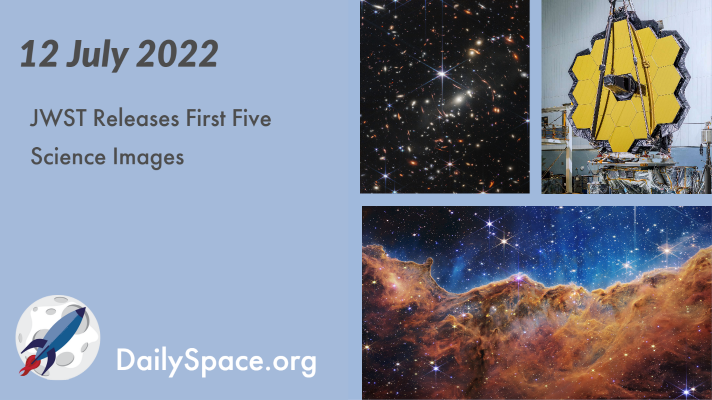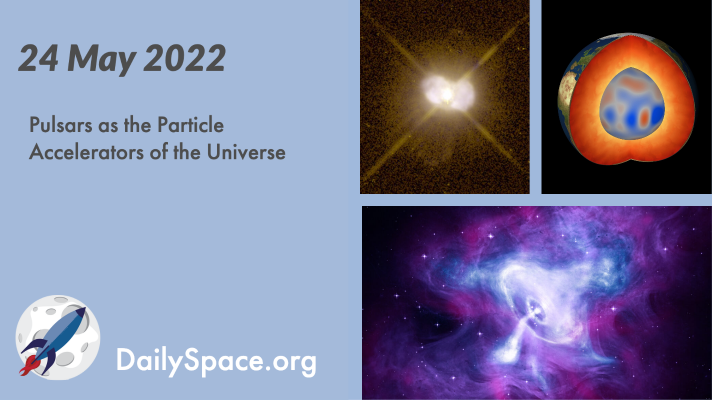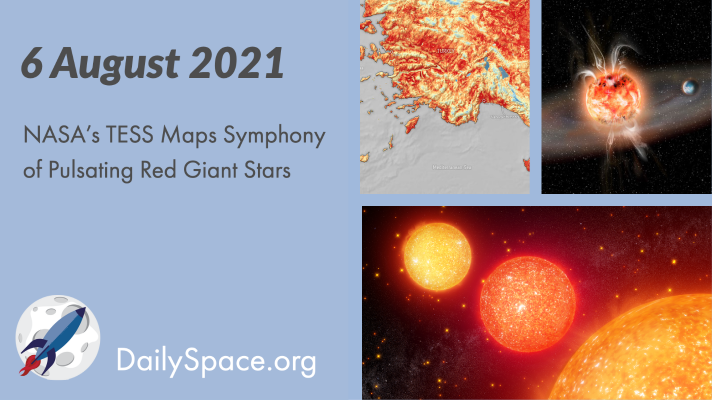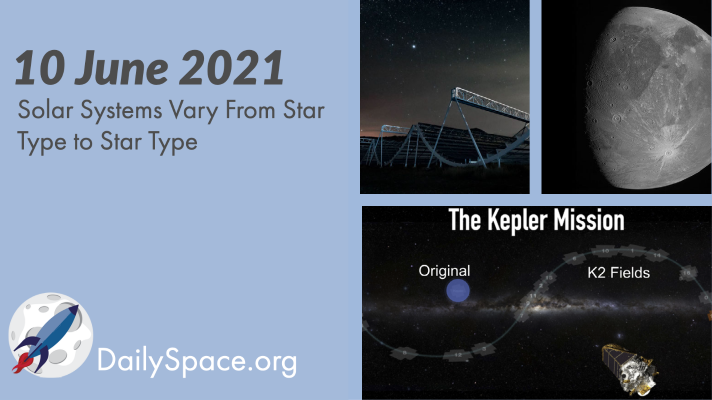
Jul 13, 2022 | Daily Space, ESA, Exoplanets, Galaxies, JWST, Nebulae, Planetary Nebulae, Star Forming Region, Stars
Starting with the stunning release of JWST’s first image of galaxy cluster SMACS 0723 on July 11, the bonanza continued the morning of July 12 with newly released images of Stephan’s Quintet, the Carina Nebula, the Southern Ring Nebula, and exoplanet WASP-96b. Plus, that controversial name and what’s ahead for the newest space observatory.

May 25, 2022 | Daily Space, Earth, Fast Radio Bursts, Galaxies, Lucy, Neutron Stars / Pulsars, Planetary Nebulae, Spacecraft, The Sun
Fast, strong magnetic winds caused by quickly rotating pulsars may be accelerating particles like electrons to extremely high-energy states and creating gamma-ray photons in their wake. Plus, missions close to home, large and distant objects, some pretty Hubble photos, and laser simulations of fast radio bursts.

Mar 30, 2022 | Astrobiology, Cosmology, Daily Space, Earth, Galaxies, Mars, Planetary Nebulae, Rockets, Space China, Supernovae Remnants, Titan
Join us as we take a deep dive into the history of atmospheric methane on Mars and Titan, how that methane could be a sign of life, and what methane means for future missions and science. Plus, a planetary nebula, a supernova, ancient helium, and a couple of rockets.

Aug 9, 2021 | Climate Change, Daily Space, Earth, Exoplanets, Neutron Stars / Pulsars, Planetary Nebulae, Stars, Supernovae
NASA’s TESS spacecraft, which is primarily used to search for exoplanets, has now observed a veritable symphony of pulsating red giant stars, each with its own internal vibrations. This work was presented at this week’s TESS Science Conference. Plus, some more climate change news (bad) and superflares may be less harmful to exoplanets than thought (good).

Jul 28, 2021 | Daily Space, Earth, Exoplanets, Galaxies, Jupiter, Planetary Nebulae, Spacecraft, Supernovae
Scientists analyzed archival data from the Hubble Space Telescope and found evidence of water vapor in the atmosphere of Jupiter’s moon Ganymede. The water vapor is present due to thermal escape from the icy surface of the moon. Plus, a “fizzled” gamma-ray burst and all the exoplanets!

Jun 11, 2021 | AAS, Daily Space, Exoplanets, Fast Radio Bursts, Guest Interview, Jupiter, Kepler, Planetary Nebulae, Planets, Spacecraft, Stars
In new research, scientists examined the populations of stars observed by the Kepler and K2 missions and found that the solar systems were different depending on the type of star involved. Plus, CHIME results, a brown dwarf’s atmosphere, a stream of stars in the Milky Way, and an interview with PSI’s Dr. Candice Hansen about the recent Ganymede flyby of NASA’s Juno spacecraft.








 We record most shows live, on Twitch. Follow us today to get alerts when we go live.
We record most shows live, on Twitch. Follow us today to get alerts when we go live.